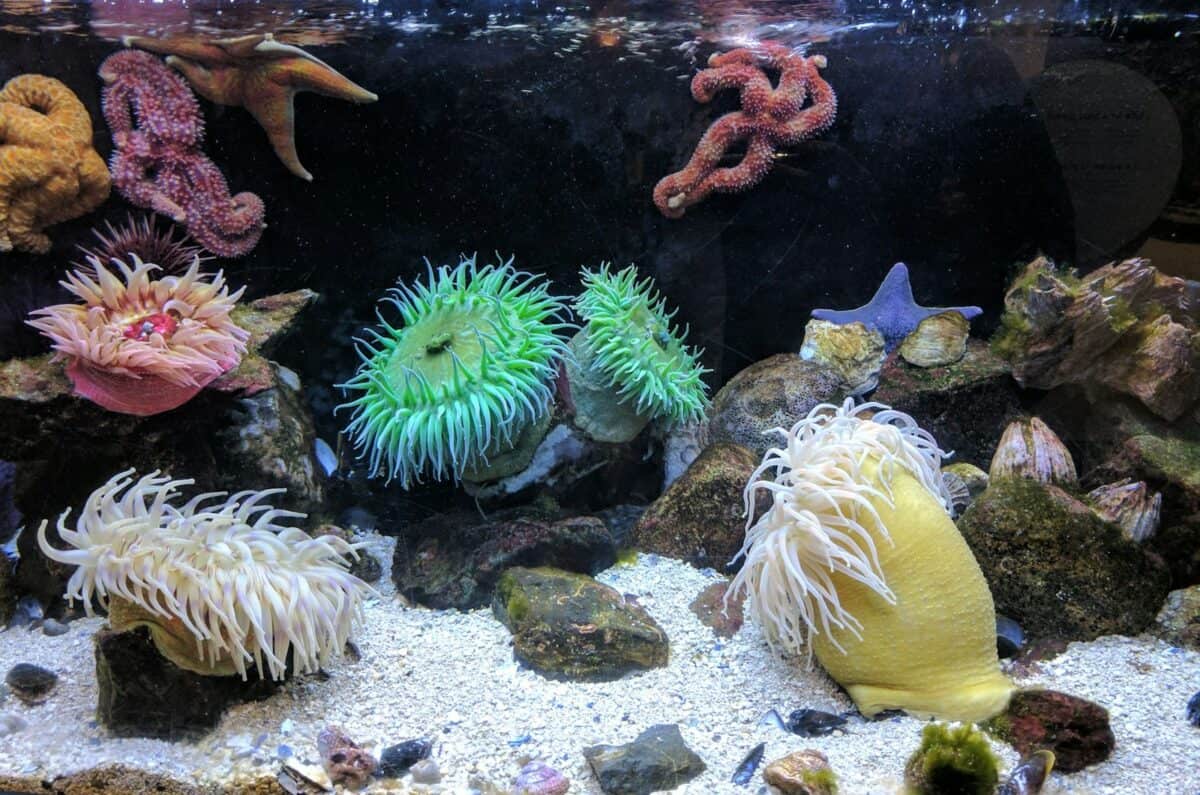Sea anemones stand as some of nature’s most paradoxical creations. At first glance, these vibrant ocean dwellers resemble underwater flowers, swaying gracefully with the currents in a mesmerizing display of colors and textures. Yet beneath this alluring exterior lies a deadly predator armed with sophisticated venom delivery systems that can paralyze prey instantly. This fascinating duality has captivated marine biologists, divers, and ocean enthusiasts for centuries. Sea anemones belong to the phylum Cnidaria, making them relatives of jellyfish and corals, and they share the distinctive stinging cells called nematocysts that define this group of invertebrates. With over 1,000 species inhabiting oceans worldwide from shallow tropical reefs to the darkest depths, sea anemones represent a perfect example of how nature often combines deadly efficiency with breathtaking beauty.
The Evolutionary Marvel of Sea Anemones
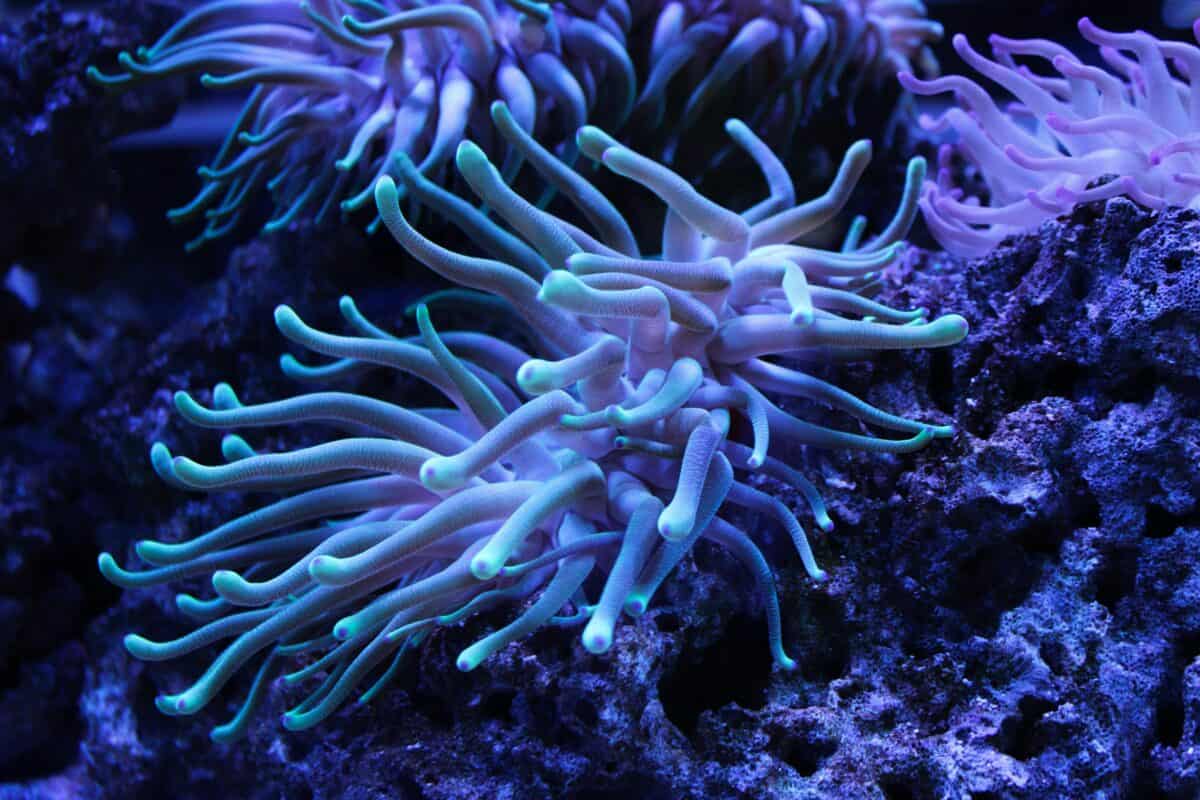
Sea anemones have existed on Earth for over 600 million years, making them one of the planet’s oldest animal groups. Their evolutionary success stems from a remarkably efficient body plan that has remained largely unchanged since the Cambrian period. These ancient creatures evolved in a time before fish dominated the seas, developing their distinctive radial symmetry and specialized tentacle structures that prove just as effective today as they were hundreds of millions of years ago.
What makes sea anemones particularly fascinating from an evolutionary perspective is their genetic adaptability. Recent genomic studies have revealed that despite their ancient origins and seemingly simple structure, sea anemones possess surprisingly complex genomes with many genes similar to those found in more advanced animals, including humans. This genetic complexity allows them to adapt to diverse marine environments ranging from tropical coral reefs to freezing polar waters, demonstrating how evolutionary success doesn’t always require anatomical complexity.
Anatomy of a Living Paradox
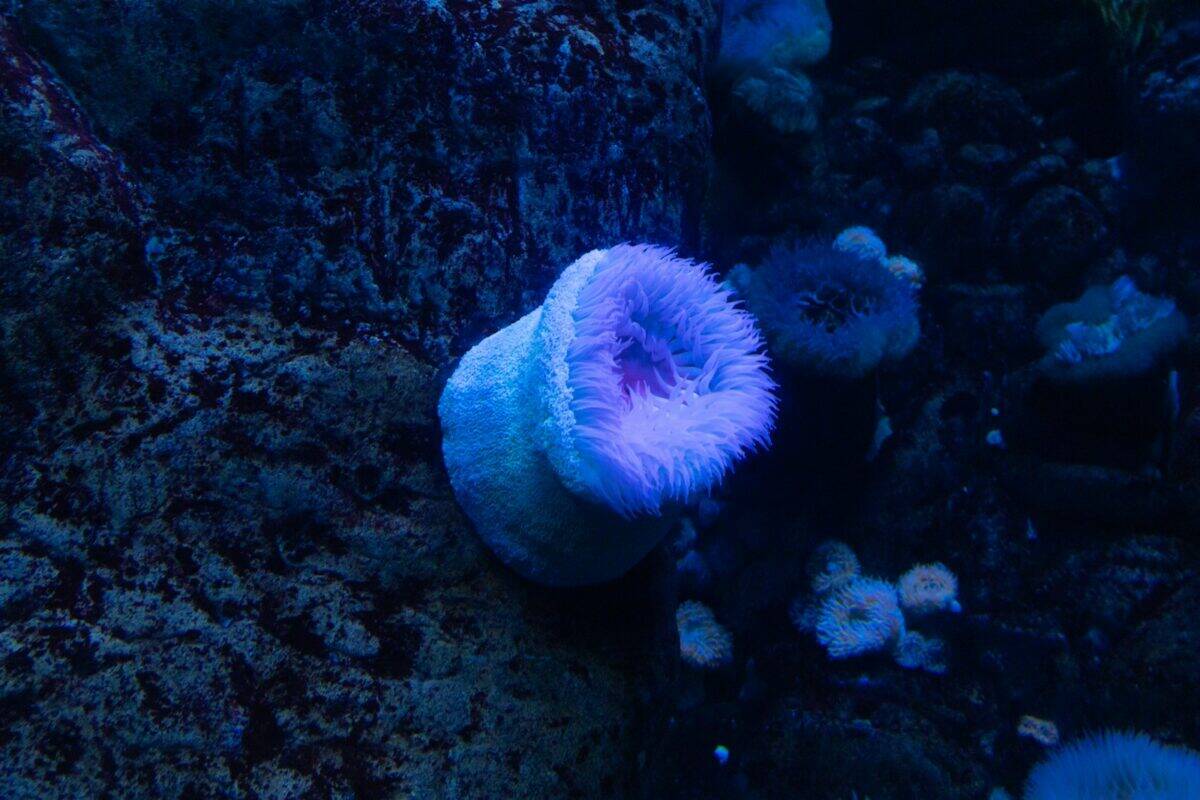
The structure of a sea anemone perfectly illustrates its dual nature as both predator and visual wonder. The basic anatomy consists of a columnar body anchored to a substrate at its base, with a ring of tentacles surrounding a central mouth at the opposite end. This simple body plan belies the sophisticated adaptations that make it both beautiful and deadly. The tentacles, which create the flower-like appearance that gives anemones their name (after the terrestrial anemone flower), are packed with thousands of specialized stinging cells called nematocysts.
Inside the column, sea anemones possess a simple digestive cavity called the coelenteron, surrounded by two layers of tissue separated by a gelatinous substance called mesoglea. Their bodies contain no specialized respiratory, circulatory, or excretory systems, yet they function remarkably efficiently. Most species display vibrant colors resulting from pigments, symbiotic algae, or light refraction through their translucent tissues. These colors serve multiple purposes: attracting prey, warning potential predators, and sometimes providing camouflage—demonstrating how even their beauty serves practical survival functions.
The Deadly Arsenal of Nematocysts

The primary weapons in a sea anemone’s arsenal are microscopic cellular structures called nematocysts, which rank among nature’s most sophisticated venom delivery systems. Each nematocyst contains a coiled, hollow thread bathed in toxins. When triggered by physical contact or chemical signals, these cells undergo an explosive discharge, firing the thread like a microscopic harpoon that can penetrate the exoskeleton of prey or the skin of potential threats. This discharge occurs in just 700 nanoseconds—one of the fastest cellular responses known in nature—with an acceleration force exceeding 5 million g.
Different sea anemone species produce various toxins with distinct effects. Some contain neurotoxins that paralyze prey by blocking nerve transmission, while others deploy cytolytic compounds that destroy cell membranes. Certain species, particularly those from tropical waters, possess toxins powerful enough to affect humans, causing symptoms ranging from mild irritation to severe pain, tissue necrosis, and in extremely rare cases, systemic effects. The complexity and potency of these venom cocktails have made sea anemone toxins valuable subjects for pharmacological research, with several compounds showing potential as painkillers, anti-cancer agents, and treatments for autoimmune disorders.
A Kaleidoscope of Colors and Forms
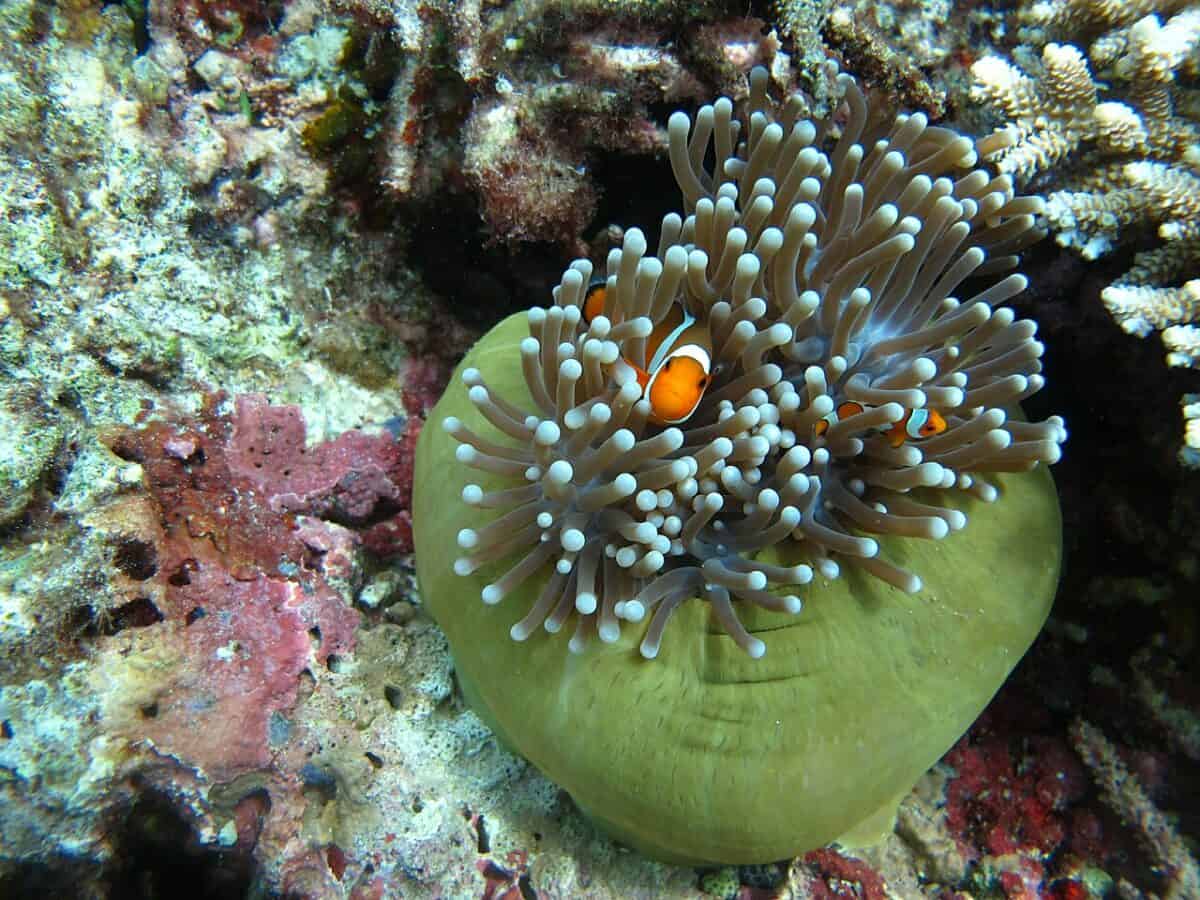
The visual diversity of sea anemones represents one of the ocean’s most spectacular displays. Colors range from vibrant reds, blues, purples, and greens to subtle creams, browns, and translucent whites. This chromatic variety stems from several sources: some species contain pigment cells, others host symbiotic algae that lend their color to the host, and still others create structural colors through light refraction. The Heteractis magnifica, or magnificent sea anemone, displays a striking purple or blue coloration that serves as a beacon for clownfish seeking symbiotic partnership.
Beyond coloration, sea anemones exhibit remarkable diversity in form and size. The giant Stichodactyla mertensii can reach over three feet in diameter with thousands of short tentacles creating a carpet-like appearance, while species like Actinodendron plumosum feature elaborately branched tentacles resembling underwater trees. The Metridium senile, common in temperate waters, possesses hundreds of fine, feathery tentacles that create a delicate, plume-like appearance. Each morphological variation represents an adaptation to specific ecological niches and feeding strategies, highlighting how beauty in nature often reflects evolutionary functionality.
Hunting Strategies of a Sessile Predator
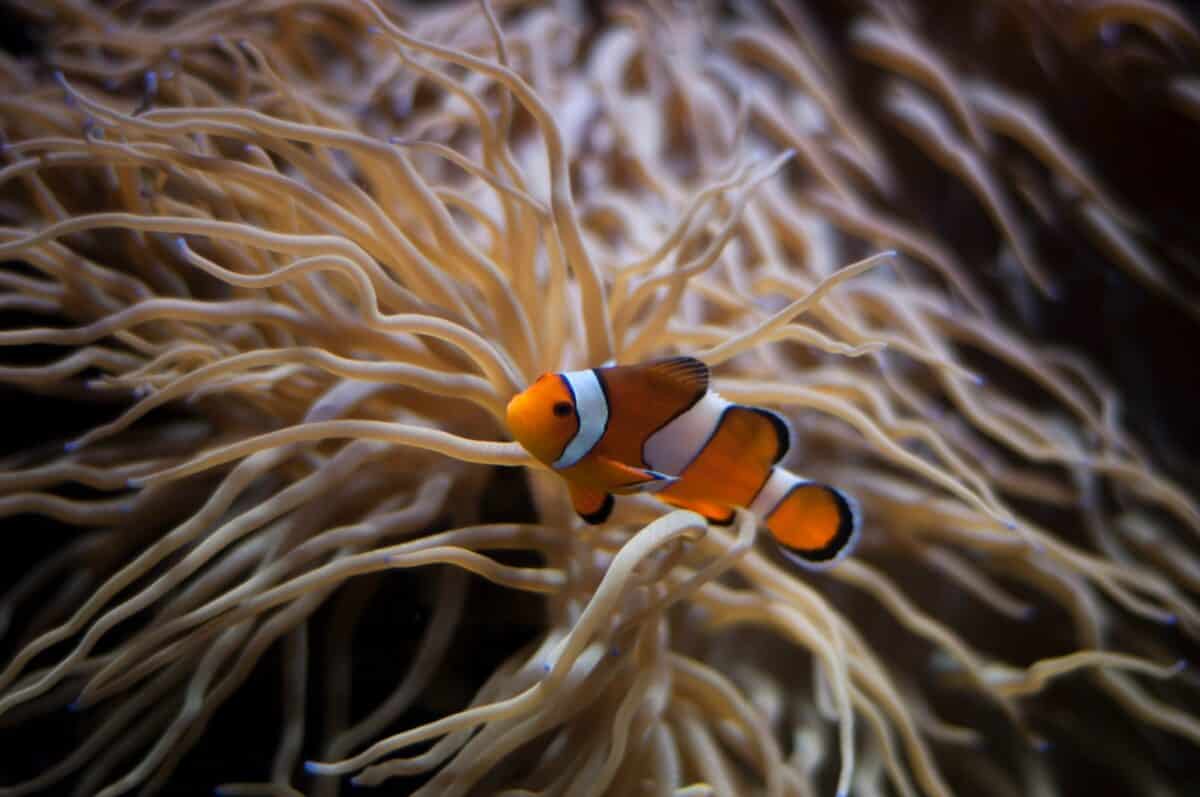
Despite being anchored in place, sea anemones have evolved remarkably effective hunting strategies. Most species employ a passive “sit-and-wait” approach, using their tentacles as a living net to capture prey that wanders too close. When small fish, crustaceans, or other invertebrates brush against these tentacles, thousands of nematocysts fire simultaneously, injecting venom that quickly immobilizes the victim. The tentacles then contract, drawing the paralyzed prey toward the central mouth where it’s engulfed and digested in the gastrovascular cavity.
Some anemone species have developed more specialized hunting techniques. The swimming anemones (Stomphia and Actinostola species) can detach from the substrate and use muscular contractions to “swim” short distances, allowing them to relocate to better hunting grounds or escape predators. Certain deep-sea anemones have evolved tentacles that can actively sweep through the water in coordinated movements to increase their chances of encountering prey in the sparsely populated depths. The Triactis producta even uses specialized tentacles called acrorhagi, which contain concentrated nematocysts, to attack and damage competing anemones in territorial disputes—showcasing how these seemingly peaceful creatures can employ their deadly arsenal against competitors as well as prey.
The Famous Clownfish Symbiosis
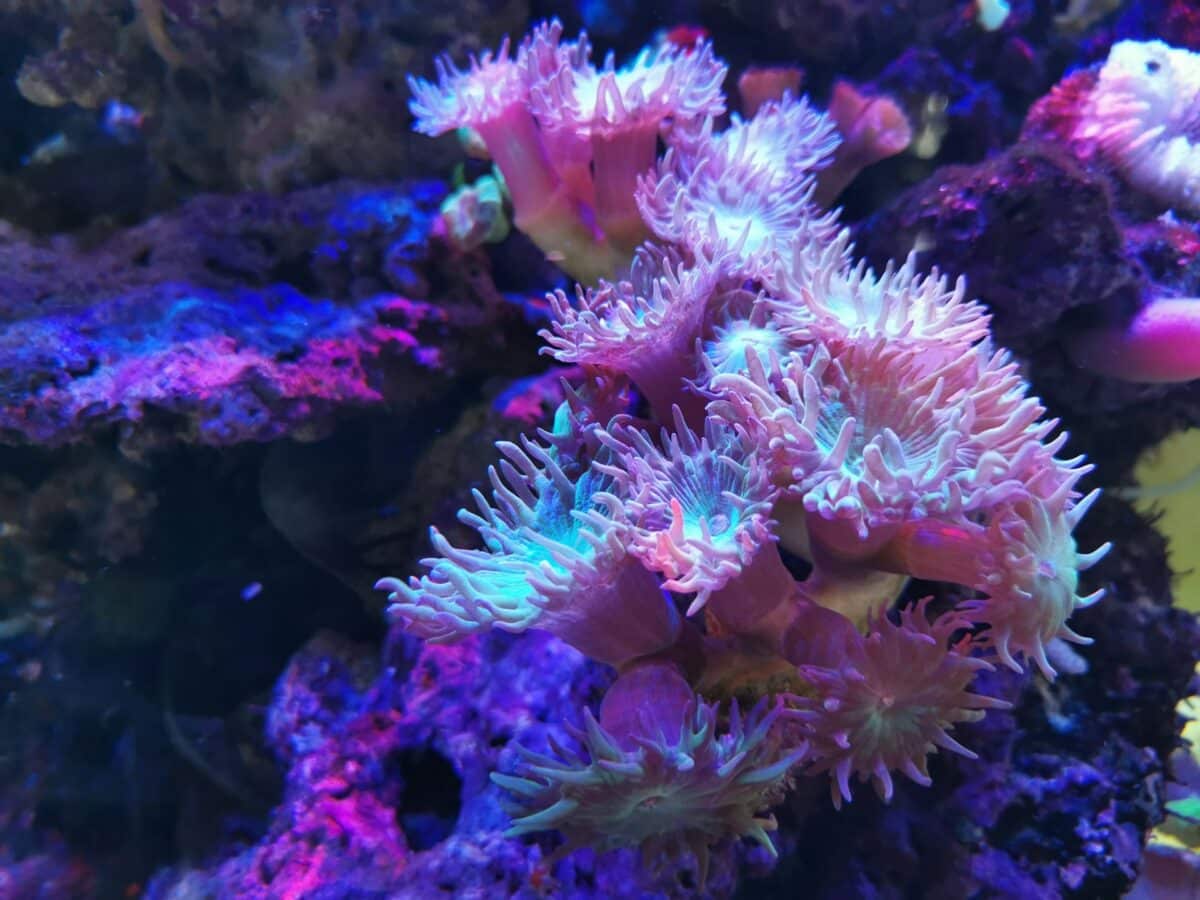
Perhaps the most celebrated aspect of sea anemone biology is their remarkable symbiotic relationship with clownfish, immortalized in popular culture through films like “Finding Nemo.” This relationship exemplifies mutualism, where both species benefit from the partnership. The anemone provides the clownfish with protection from predators, as the fish has evolved a specialized mucus coating that prevents the anemone’s nematocysts from firing. In return, the clownfish defends the anemone from certain predators, removes parasites, and provides nutrients through its waste products.
The science behind this symbiosis reveals fascinating adaptations. Clownfish gradually acclimate to their host anemone through a careful process of limited contact, during which they cover themselves with the anemone’s mucus to mask their own chemical signature. Research has shown that the fish’s protective mucus contains glycoproteins similar to those in the anemone itself, essentially fooling the host’s defense mechanisms. Not all anemones host clownfish—only 10 species out of the thousand-plus known anemones participate in this relationship. The visual contrast between the brightly colored fish and their host anemones creates one of the ocean’s most photogenic and scientifically intriguing partnerships.
Reproduction: Both Sexual and Asexual

Sea anemones showcase reproductive flexibility that contributes to their evolutionary success. Most species can reproduce both sexually and asexually, adapting their reproductive strategy to environmental conditions. Sexual reproduction typically involves the release of eggs and sperm into the water column in synchronized spawning events, often triggered by lunar cycles or seasonal changes in temperature. The fertilized eggs develop into free-swimming larvae called planulae, which eventually settle on a suitable substrate and metamorphose into juvenile anemones.
Asexual reproduction occurs through several methods: binary fission, where the anemone splits into two individuals; pedal laceration, where small pieces of the pedal disc break off and develop into new anemones; and budding, where miniature clones grow from the parent’s body before detaching. This reproductive versatility allows sea anemones to rapidly colonize favorable habitats through asexual reproduction while maintaining genetic diversity through occasional sexual reproduction. Some species display remarkable longevity, with individuals in captivity documented to live over 80 years, and some wild specimens estimated to be centuries old—making them among the longest-lived animals on Earth.
Sea Anemones in Human Culture and Research
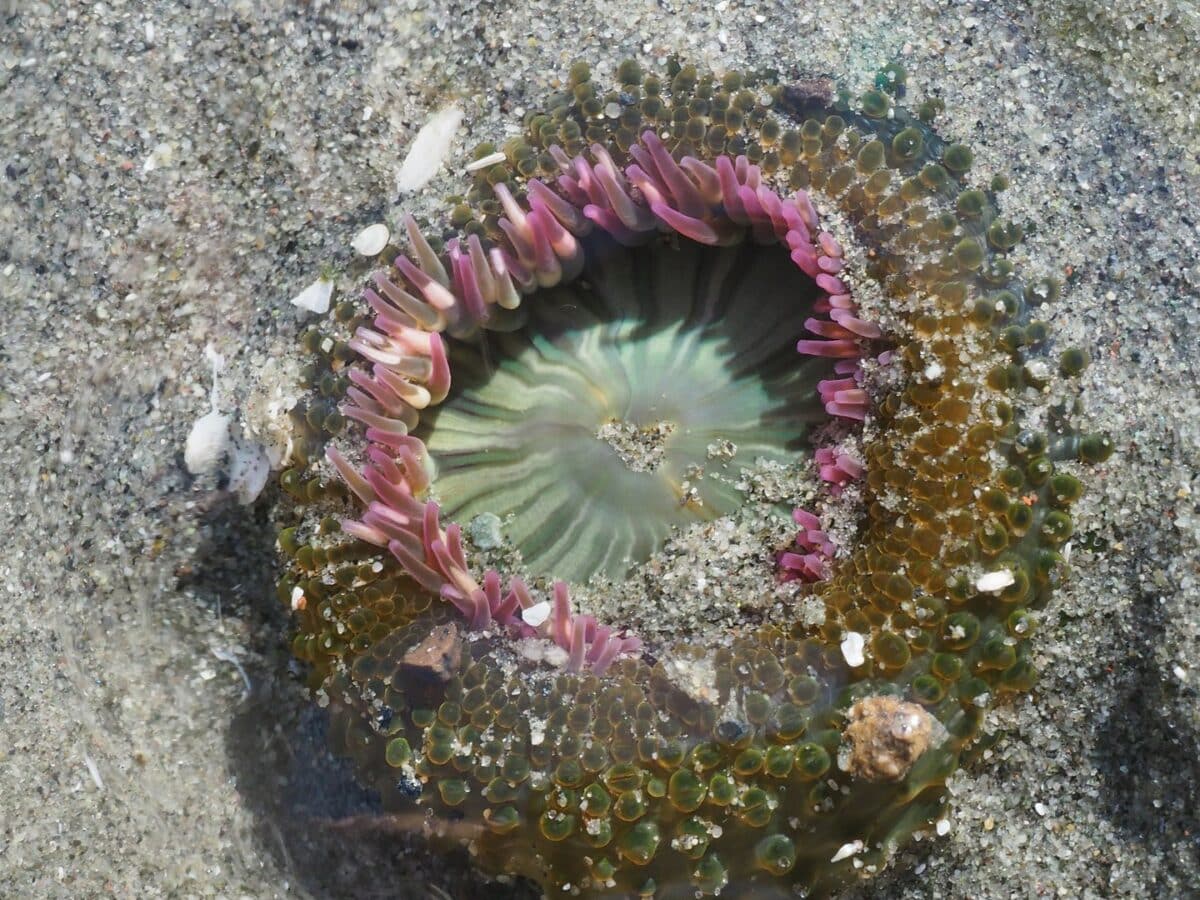
Throughout history, humans have been fascinated by sea anemones, incorporating them into art, mythology, and science. Ancient Greek naturalists named these creatures after the terrestrial anemone flower, recognizing their floral appearance. In Victorian England, sea anemones became popular subjects for home aquariums during the “pteridomania” or fern craze period, when collecting natural specimens was fashionable among the upper classes. Their distinctive appearance has inspired countless artistic representations, from detailed scientific illustrations to stylized designs in jewelry and decorative arts.
Modern scientific research on sea anemones spans multiple disciplines. Neuroscientists study their simple nervous systems to understand basic principles of neural function; toxicologists analyze their venoms for pharmaceutical applications; and evolutionary biologists examine their genetics to investigate fundamental questions about animal evolution. The sea anemone Nematostella vectensis has become an important model organism in developmental biology due to its relatively simple genome and ease of laboratory culture. Additionally, research into the symbiotic relationships between anemones and their algal partners provides insights into climate change impacts, as rising ocean temperatures can disrupt these delicate partnerships.
The Environmental Importance of Sea Anemones
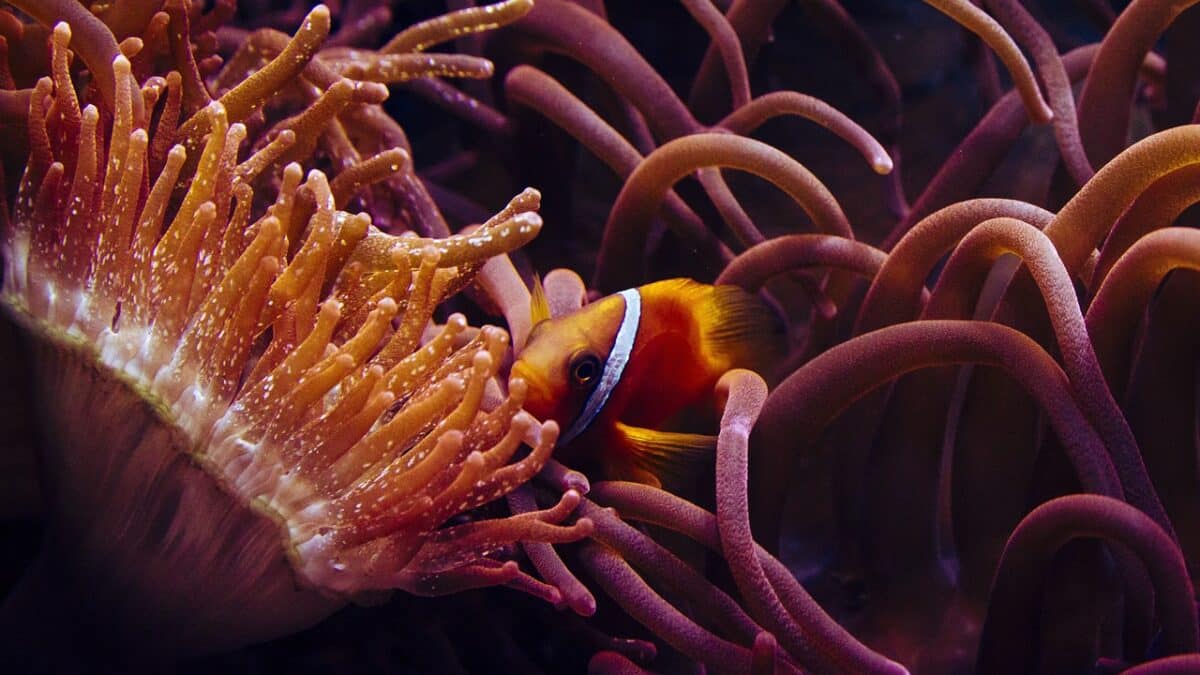
As key components of marine ecosystems, sea anemones play several vital ecological roles. In coral reef environments, they contribute to biodiversity by creating microhabitats for symbiotic species and small invertebrates that shelter among their tentacles. Their predatory activities help regulate populations of small fish and invertebrates, while they themselves serve as food sources for specialized predators like certain nudibranchs (sea slugs) and some fish species that have evolved immunity to their toxins.
Sea anemones also function as bioindicators of marine environmental health. Many species show sensitivity to water quality changes, pollution, and temperature fluctuations, making their population dynamics valuable for monitoring ecosystem conditions. In reef systems, anemones with symbiotic algae contribute to primary productivity through photosynthesis, similar to corals. Climate change poses significant threats to anemone populations, particularly for species dependent on symbiotic relationships with algae, as ocean warming can cause symbiont loss (bleaching) similar to the well-documented coral bleaching phenomenon.
Deadly Beauty: The Most Dangerous Species
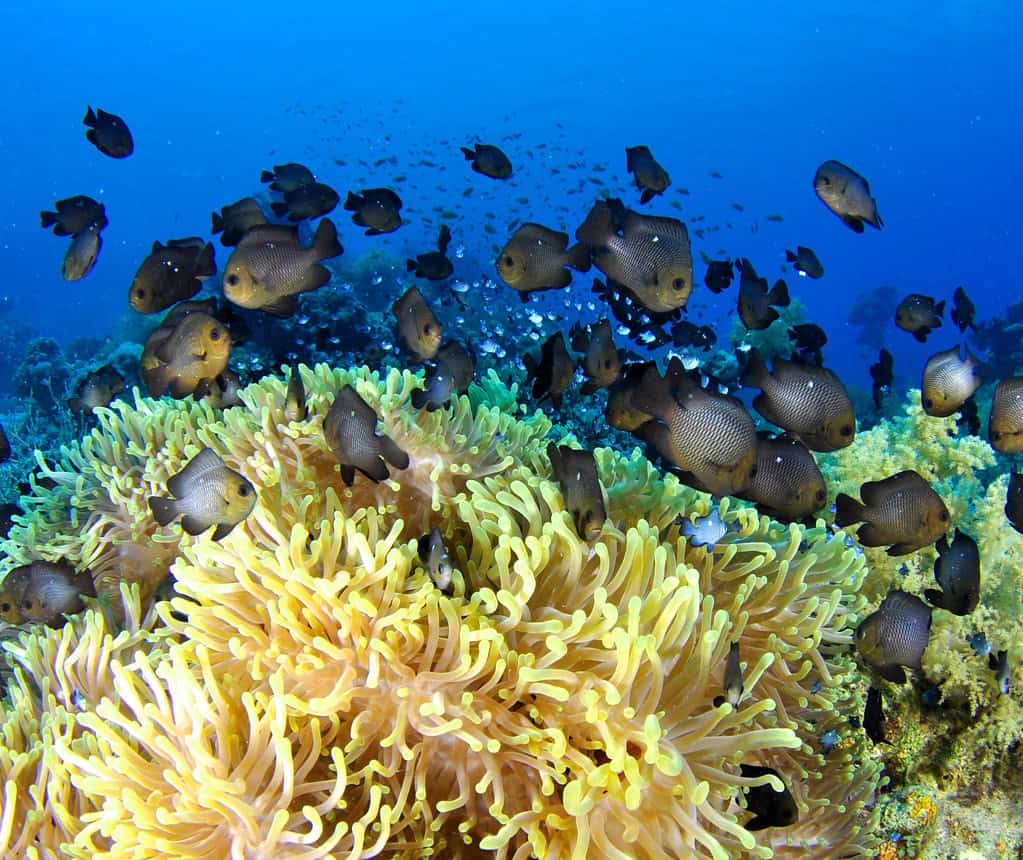
While most sea anemones pose little threat to humans, several species pack a potent punch that commands respect. The Actinodendron plumosum, aptly nicknamed the “Hell’s Fire Anemone,” produces toxins that can cause excruciating pain, extensive tissue damage, and potentially life-threatening reactions in sensitive individuals. Native to the Indo-Pacific region, its elegant, tree-like tentacles belie its dangerous nature. Similarly, the Triactis producta, though small, possesses specialized fighting tentacles with particularly concentrated venom that can cause severe dermatitis in humans who handle them carelessly.
The Portuguese man-of-war (Physalia physalis), while technically a colonial hydrozoan rather than a true anemone, deserves mention for its anemone-like appearance and extraordinarily powerful sting. Its venom contains neurotoxins and cytolysins that can cause intense pain, respiratory problems, cardiac complications, and in rare cases, death. Even dead specimens washed ashore can deliver painful stings. For divers and snorkelers, learning to identify these more dangerous species is an essential safety skill, as most severe envenomations occur when people deliberately handle these animals, unaware of the risks their beautiful exteriors conceal.
Conservation Challenges and Human Impact
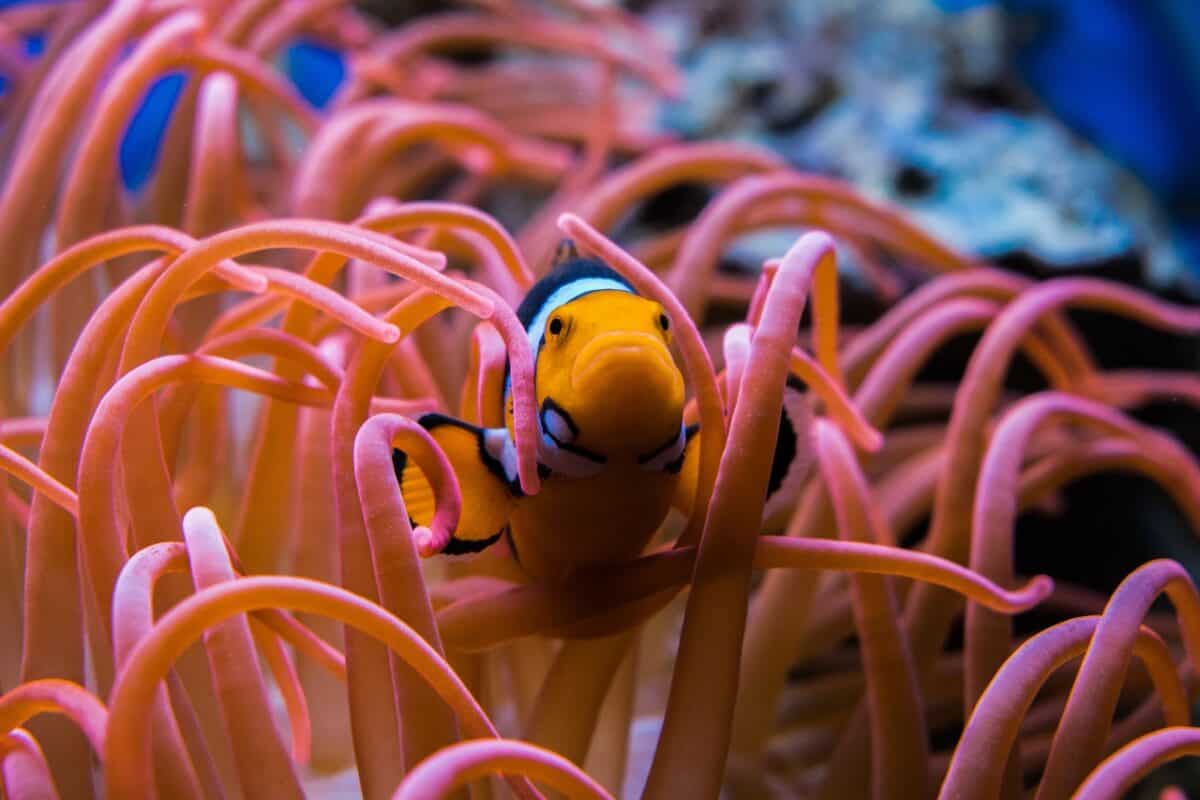
Despite their ancient lineage and adaptability, sea anemones face mounting threats from human activities. Habitat destruction through coastal development, marine pollution, destructive fishing practices, and climate change all impact anemone populations worldwide. The aquarium trade presents another significant pressure, with millions of specimens collected annually for home aquariums. Certain species, particularly those that host clownfish, face targeted collection that can deplete local populations. The harvesting often uses destructive methods that damage surrounding habitats.
Conservation efforts for sea anemones include marine protected areas, sustainable collection practices for the aquarium trade, and captive breeding programs. Research into artificial propagation techniques has made progress, with several anemone species now successfully cultured for the aquarium industry, reducing pressure on wild populations. Citizen science initiatives involving recreational divers help monitor anemone populations and document changes over time. As keystone species in many marine ecosystems, protecting sea anemones requires integrated approaches that address both direct threats from collection and broader environmental challenges like climate change and ocean acidification.
Embracing the Paradox: Beauty and Danger in Nature
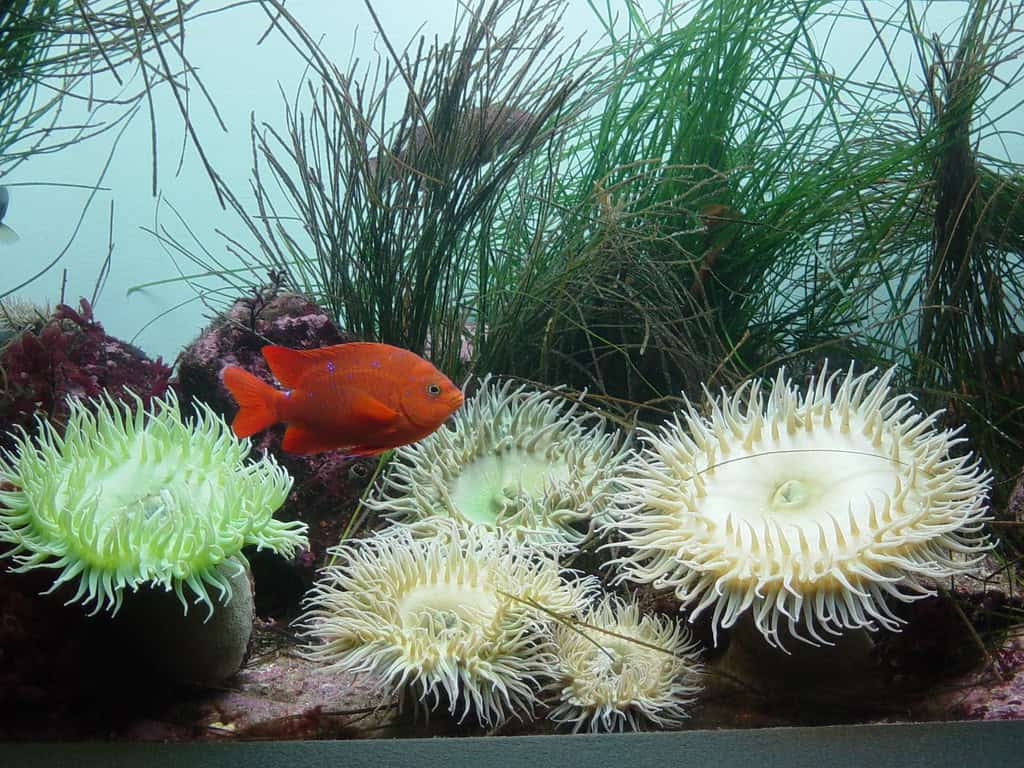
Sea anemones embody nature’s fascinating tendency to combine deadly efficiency with breathtaking beauty, challenging our human tendency to separate these qualities. Throughout evolutionary history, this duality has served sea anemones exceptionally well, allowing them to survive multiple mass extinction events and adapt to virtually every marine environment on Earth. Their success story reminds us that in nature, beauty often serves practical purposes—attracting beneficial symbiotic partners, warning potential predators, or luring unsuspecting prey.
As we continue to explore and understand these remarkable creatures, sea anemones offer important lessons about respecting nature’s complexity. Their deadly tentacles and exquisite forms represent two sides of the same evolutionary coin, perfectly adapted to their ecological niche. For scientists, they provide research opportunities spanning fields from toxicology to evolutionary biology, while for conservationists, they represent a flagship group illustrating the interconnectedness of marine ecosystems. Most importantly, for all who encounter them—whether in person or through media—sea anemones inspire wonder at how nature’s deadliest innovations can simultaneously create some of its most beautiful expressions.
- How Penguins Take Turns at Sea and Nest to Raise Chicks - August 9, 2025
- Dolphin Brains Compare to Those of Apes and Humans - August 9, 2025
- 14 Cutting-Edge Biotech Innovations That Will Shape the Future - August 9, 2025

